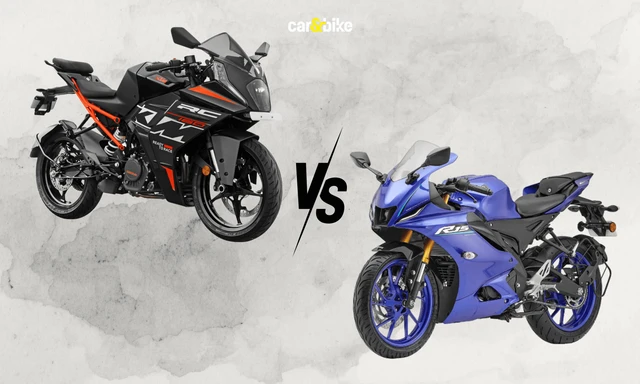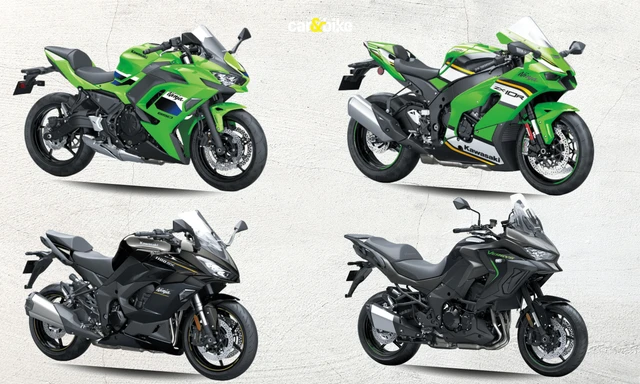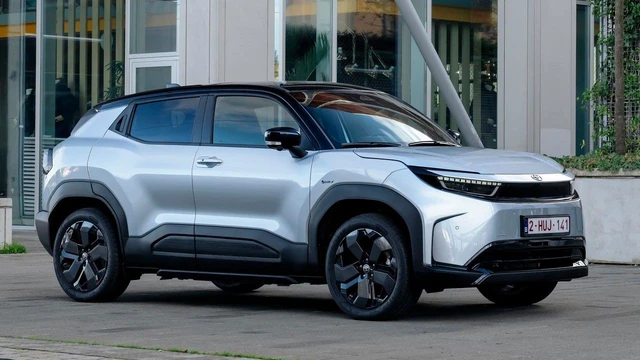Expert Guide On Automated Manual Transmissions

- Automatic transmissions were introduced to masses way back in 1939.
- Automatic transmissions were introduced to masses way back in 1939.
- Automatic transmissions have advantages too.
One of the questions that beckon most new car buyers is the automated and manual transmission. Both the systems have proven their utility over the years, but with the emergence of new technology automated manual transmission, the automobile industry is set for a new era.

Photo Credit: https://pixabay.com
What are automated manual transmissions?
The entire automated manual transmission module consists of an electronic Transmission Control Unit (TCU) and an electro-hydraulic system as support. The TCU sends electronic commands through the electro-hydraulic system to give the hydraulic actuator directions that make the gear changes inside the gearbox. A vehicle equipped with AMT does not have a clutch plate (since there are no manual gear changes) – it only has an accelerator and braking system.
The basic difference between manual and automated manual transmissions is that in automated, the transmission consists of more hydraulic systems. AMTs are cheaper than fully automated transmissions, so some budget-friendly cars are very popular in the market right now. The cars that use this technology include Citreon's Servotronic, Alfa Romeo's Selespeed, Audi's R-Tronic, and BMW's Sequential Manual Gearbox.
Advantages of Automated Manual Transmissions
There are several reasons as to why automated manual transmissions are being used in the industry currently:
- Ease of driving: The most obvious fact here is that since there is no hassle of gear change, it is more convenient to drive these vehicles. When several gear changes are needed in rush hour traffic, AMTs show their worth. The "creep" function is a bonus that allows the vehicle to move slowly after releasing the brake pedal.
- Fuel economy: Generally, AMTs find their usage in hatchbacks; the shift pattern is manufactured so that maximum fuel efficiency is achieved. Since it's computer-operated, it's precise as well.
- Cost-effective: Conventional automatics cost a fortune instead of AMTs; AMT gearboxes cost about half of what automatics do.
- Desirable driving: AMT cars can shift to manual mode whenever the driver prefers it. Since no clutch is involved, the shift to traditional mode is even easier.

Photo Credit: https://pixabay.com
Disadvantages of Automated Manual Transmissions
Just like any other technology, there are several cons to using AMTs; the list includes the following:
- Jerky gear shifts: The shift is not always consistent in AMT cars. Compared to other automatics in the market, the AMTs seem much more inferior. Sometimes the gear shift is smooth; sometimes it is jerky.
- Overtaking problems: One of the major problems with AMTs is that any unplanned shifts in the gearbox are not welcome. These are tuned to save fuel, so overtaking is a hassle. These shifts could be dangerous, so such maneuvers should be done in manual mode.
- Going up inclines: Tackling hills or inclines is tricky with automated manual transmissions. That needs complete manual functioning and regular use of the handbrakes. That negates the convenience factor of AMTs that people buy these for.
While automated manual transmission has its share of challenges, the technology does hold a lot of promise for the future.
Latest News
 car&bike Team | Jan 12, 2026Updated Royal Enfield Goan Classic 350 Launched: Gets Slip And Assist ClutchThe updated Goan Classic also gets a faster Type-C charging port.1 min read
car&bike Team | Jan 12, 2026Updated Royal Enfield Goan Classic 350 Launched: Gets Slip And Assist ClutchThe updated Goan Classic also gets a faster Type-C charging port.1 min read Jaiveer Mehra | Jan 12, 2026Tata Punch Facelift Launch Tomorrow: What To ExpectUpdated internal combustion Punch gets a design in line with its larger siblings as well as a new engine option.3 mins read
Jaiveer Mehra | Jan 12, 2026Tata Punch Facelift Launch Tomorrow: What To ExpectUpdated internal combustion Punch gets a design in line with its larger siblings as well as a new engine option.3 mins read Jafar Rizvi | Jan 9, 2026KTM RC 160 vs Yamaha R15: Specifications, Features, Prices ComparedKTM’s new RC 160 goes head-to-head with the Yamaha R15 in the entry-level sportbike category. Here is how the two fare on paper.1 min read
Jafar Rizvi | Jan 9, 2026KTM RC 160 vs Yamaha R15: Specifications, Features, Prices ComparedKTM’s new RC 160 goes head-to-head with the Yamaha R15 in the entry-level sportbike category. Here is how the two fare on paper.1 min read Amaan Ahmed | Jan 9, 2026Suzuki E-Access Launched At Rs 1.88 Lakh; LFP Battery Promises 95 KM RangeOriginally confirmed for a June 2025 launch, Suzuki's first electric two-wheeler for India has finally arrived almost a year after making its global debut at Auto Expo 2025.3 mins read
Amaan Ahmed | Jan 9, 2026Suzuki E-Access Launched At Rs 1.88 Lakh; LFP Battery Promises 95 KM RangeOriginally confirmed for a June 2025 launch, Suzuki's first electric two-wheeler for India has finally arrived almost a year after making its global debut at Auto Expo 2025.3 mins read car&bike Team | Jan 9, 2026Kawasaki Ninja, Versys Models Offered With Discounts Of Up To Rs 2.50 LakhThe Ninja ZX-10R is offered with maximum benefits, followed by the Ninja 1100SX and Versys 1100.1 min read
car&bike Team | Jan 9, 2026Kawasaki Ninja, Versys Models Offered With Discounts Of Up To Rs 2.50 LakhThe Ninja ZX-10R is offered with maximum benefits, followed by the Ninja 1100SX and Versys 1100.1 min read Bilal Firfiray | Jan 9, 2026Toyota Urban Cruiser EV: What To ExpectToyota will be introducing an all-electric vehicle for the first time in India. It is the Toyota-badged version of the soon-to-be-launched Maruti Suzuki e-Vitara, and here’s everything we expect from it.1 min read
Bilal Firfiray | Jan 9, 2026Toyota Urban Cruiser EV: What To ExpectToyota will be introducing an all-electric vehicle for the first time in India. It is the Toyota-badged version of the soon-to-be-launched Maruti Suzuki e-Vitara, and here’s everything we expect from it.1 min read
 Bilal Firfiray | Jan 9, 2026Toyota Urban Cruiser Hyryder: 10,000 km Long-Term ReviewAfter spending over three months and 10,000 km with the Toyota Urban Cruiser Hyryder Hybrid, we were impressed by its real-world mileage, seamless hybrid, practical comfort, and Toyota reliability. Is it the best C-SUV then?5 mins read
Bilal Firfiray | Jan 9, 2026Toyota Urban Cruiser Hyryder: 10,000 km Long-Term ReviewAfter spending over three months and 10,000 km with the Toyota Urban Cruiser Hyryder Hybrid, we were impressed by its real-world mileage, seamless hybrid, practical comfort, and Toyota reliability. Is it the best C-SUV then?5 mins read Seshan Vijayraghvan | Jan 8, 20262026 Mahindra XUV 7XO Review: Big On Tech, Bigger On ComfortThe new Mahindra XUV 7XO is flashier, feature packed, and comes with more advanced tech. But are the changes just incremental or actually substantial?1 min read
Seshan Vijayraghvan | Jan 8, 20262026 Mahindra XUV 7XO Review: Big On Tech, Bigger On ComfortThe new Mahindra XUV 7XO is flashier, feature packed, and comes with more advanced tech. But are the changes just incremental or actually substantial?1 min read Preetam Bora | Jan 10, 2026Simple One Gen 2 First Ride Review: 265 km Claimed Range!The Gen 2 model of Simple Energy’s first electric scooter gets a fair few updates, including new features, tech, more range and lighter weight. We spent a couple of hours with the Simple One Gen 2 to find out if it manages to impress.6 mins read
Preetam Bora | Jan 10, 2026Simple One Gen 2 First Ride Review: 265 km Claimed Range!The Gen 2 model of Simple Energy’s first electric scooter gets a fair few updates, including new features, tech, more range and lighter weight. We spent a couple of hours with the Simple One Gen 2 to find out if it manages to impress.6 mins read Amaan Ahmed | Jan 3, 2026VLF Mobster 135 300 KM Review: Fun But FlawedA 125 cc scooter with Italian design and Chinese genes is a rare combination, and while some may be tempted to dismiss it because of its origins, the VLF Mobster shows 125s can also be exciting – but not without compromises.11 mins read
Amaan Ahmed | Jan 3, 2026VLF Mobster 135 300 KM Review: Fun But FlawedA 125 cc scooter with Italian design and Chinese genes is a rare combination, and while some may be tempted to dismiss it because of its origins, the VLF Mobster shows 125s can also be exciting – but not without compromises.11 mins read Preetam Bora | Dec 30, 2025TVS Orbiter Review: Real-World Performance and Range TestedThe TVS Orbiter is a promising electric scooter promising decent range, practicality and pricing. But is there any reason to avoid it? We spent a few days getting to know it better.9 mins read
Preetam Bora | Dec 30, 2025TVS Orbiter Review: Real-World Performance and Range TestedThe TVS Orbiter is a promising electric scooter promising decent range, practicality and pricing. But is there any reason to avoid it? We spent a few days getting to know it better.9 mins read






















































































































